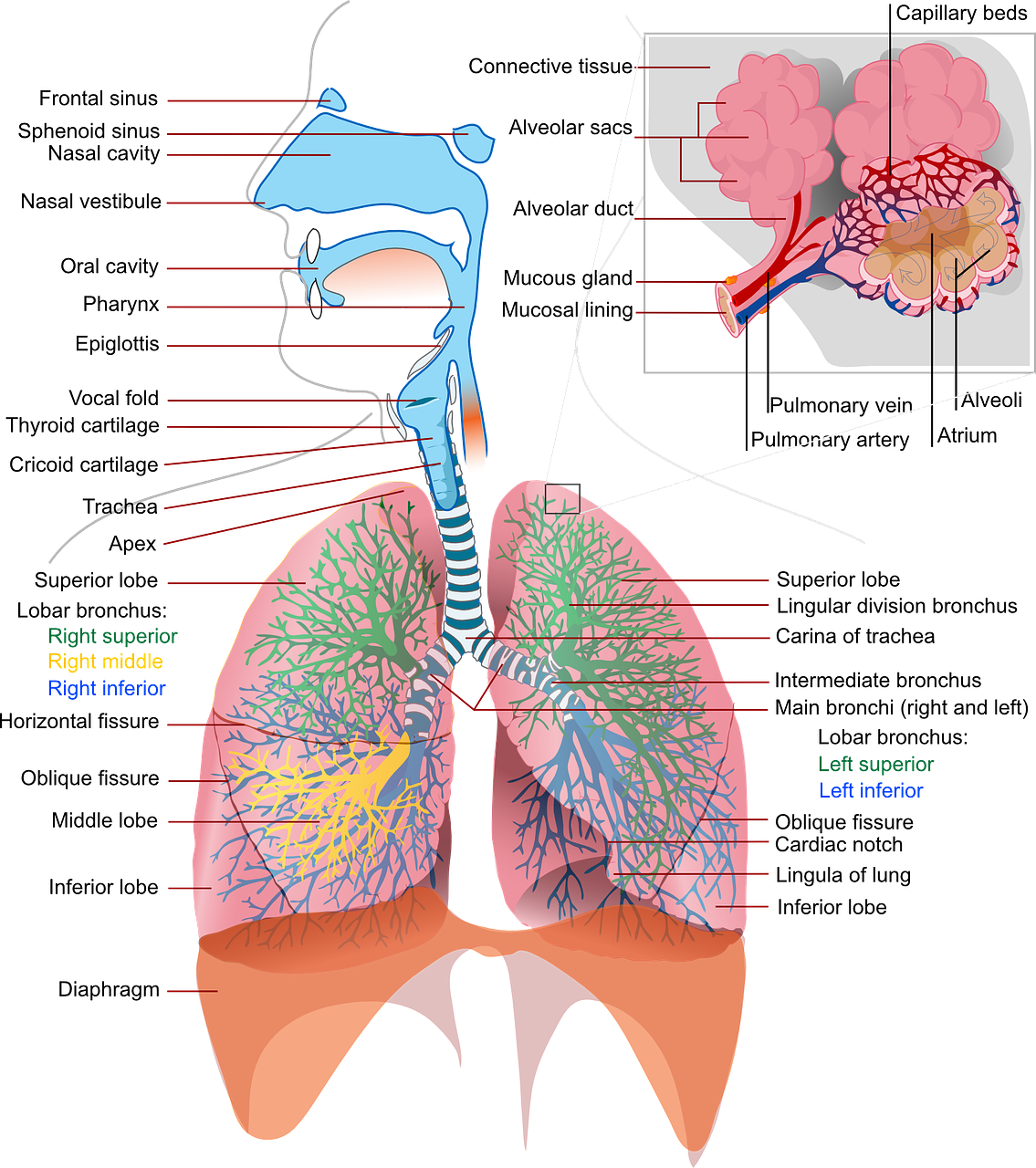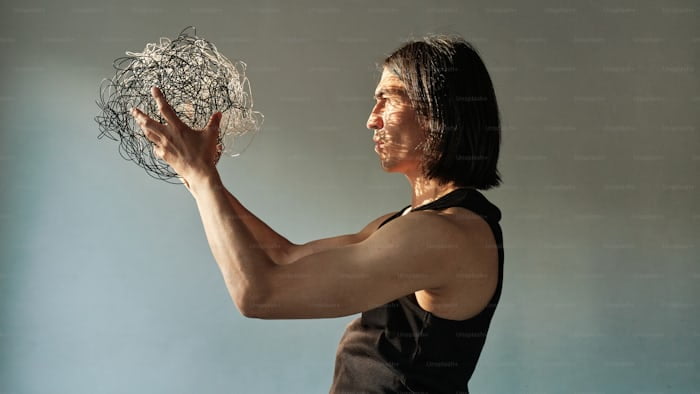Full Body Vibration in Martial Arts
Full Body Vibration (FBV) refers to the involuntary tremors and shivers that can occur throughout the entire body, often triggered by high-stress situations or intense physical exertion.
In the realm of martial arts, understanding and controlling FBV is crucial for optimal performance.
This phenomenon can significantly impact a martial artist’s ability to execute precise movements, maintain balance, and deliver powerful strikes, making it a critical aspect to master.
Physiologically, FBV is often a result of the body’s natural response to adrenaline, which is released in reaction to stress or perceived danger.
This adrenaline surge causes muscles to contract and can lead to shaking or vibrations.
Additionally, the rapid breathing and increased heart rate associated with these high-stress moments can exacerbate the sensation of FBV, further challenging the martial artist’s control over their body.
Psychologically, FBV can be influenced by anxiety, fear, and mental pressure.
For instance, pre-fight jitters are a common scenario where FBV might manifest.
The anticipation of a match, the crowd’s presence, and the mental preparation required can all contribute to heightened nervousness, resulting in noticeable body tremors.
During intense moments in a match, such as when an opponent launches a sudden attack, the stress and pressure can cause similar reactions.
Controlling FBV is essential for martial artists because it directly affects their performance.
Effective management of FBV can lead to improved precision in techniques, better stamina, and enhanced mental clarity, all of which are vital for success in martial arts.
Techniques such as deep breathing exercises, mental conditioning, and physical training can aid in mitigating the effects of FBV.
allowing martial artists to maintain composure and execute their skills effectively under pressure.
Understanding the Causes of Full Body Vibration
Full body vibration (FBV) is a phenomenon that can significantly affect martial artists, often stemming from a combination of psychological and physiological factors.
One primary cause is the adrenaline rush that occurs during combat.
When a fighter perceives a threat, the body activates its fight-or-flight response, releasing adrenaline into the bloodstream.
This surge in adrenaline can lead to uncontrollable tremors as the body prepares for either combat or escape.
impacting a fighter’s precision and control.
Anxiety and fear are also significant contributors to FBV.
In high-stress situations, such as facing a formidable opponent or performing in front of an audience.
martial artists may experience heightened levels of anxiety.
This emotional stress can manifest physically as shaking or trembling, which compromises balance and coordination.
For instance, a seasoned martial artist may find their hands trembling uncontrollably before a critical match, despite years of training and experience.
Physical exhaustion is another critical factor.
Prolonged training sessions or intense bouts can deplete a fighter’s energy reserves, leading to muscle fatigue.
When muscles are fatigued, they are more prone to involuntary contractions, resulting in full body vibration.
This kind of physical strain is often observed in marathon sparring sessions where even the most conditioned athletes may find it challenging to maintain steady, controlled movements.
Real-life examples from martial arts underscore these points.
Consider a scenario where a fighter, despite rigorous preparation, faces an unexpected opponent in a tournament.
The sudden change can trigger a fight-or-flight response, causing noticeable shaking.
Similarly, a practitioner who has pushed beyond their physical limits during training might experience shaky limbs, reducing their ability to execute precise techniques.
Understanding these causes is crucial for martial artists aiming to master full body vibration control.
By recognizing the sources of FBV, practitioners can develop strategies to mitigate its effects, ensuring they maintain peak performance even under the most challenging conditions.
The Importance of Mental Preparation
Mental preparation is a cornerstone in mastering full body vibration (FBV) control in martial arts.
It is not merely about physical prowess; the mind plays a crucial role in determining a fighter’s ability to maintain control under pressure.
Techniques such as visualization, mindfulness, and meditation are integral to mental conditioning, helping fighters achieve an optimal state of focus and calmness.
Visualization involves mentally rehearsing movements and strategies.
By picturing successful execution of techniques, fighters can build neural pathways that enhance their physical performance.
For example, a martial artist might visualize themselves maintaining perfect balance and precise control during a high-stress situation.
thereby reducing the likelihood of succumbing to disruptive vibrations.
Mindfulness, the practice of staying present and fully engaged in the current moment, is another powerful tool.
It helps fighters become more aware of their bodily sensations and emotional responses, allowing them to manage stress and maintain FBV control more effectively.
Simple mindfulness exercises, such as focusing on breath or tuning into the body’s sensations, can be incorporated into daily training routines.
Meditation, particularly techniques that promote relaxation and mental clarity, further supports mental preparation.
Regular meditation can help reduce anxiety, improve concentration, and foster a sense of inner peace, all of which are beneficial in high-pressure scenarios.
Fighters might dedicate a few minutes each day to meditation, focusing on deep, rhythmic breathing and clearing the mind of distractions.
Integrating these practices into daily routines can be straightforward.
Fighters can start their day with a short meditation session, incorporate visualization exercises before training, and practice mindfulness throughout their activities.
Over time, these habits can lead to significant improvements in mental resilience and FBV control, translating to better performance in competitions.
The benefits of mental preparation are manifold.
Reduced anxiety and enhanced concentration not only improve performance but also contribute to overall well-being.
By committing to regular mental conditioning.
martial artists can ensure they are mentally equipped to handle the rigors of their sport.
maintaining full control over their bodies even in the most challenging situations.
Breathing Techniques to Manage Vibration
In the realm of martial arts, effective breathing techniques are essential for mastering full body vibration (FBV) control both before and during a fight.
Deep breathing exercises are instrumental in calming the mind and body, allowing fighters to maintain focus and composure.
The science behind these techniques lies in their ability to activate the parasympathetic nervous system.
which promotes relaxation and reduces stress-induced vibrations.
One of the most fundamental techniques is diaphragmatic breathing.
This method involves inhaling deeply through the nose, allowing the diaphragm to expand and fill the lungs with air.
To practice this, place one hand on the chest and the other on the abdomen.
Take a slow, deep breath in, ensuring that the abdomen rises more than the chest.
Exhale slowly through the mouth. Repeating this process for several minutes can significantly lower heart rate and stabilize vibrations.
Another effective technique is box breathing.

This method, also known as four-square breathing, involves inhaling, holding the breath, exhaling, and holding again, each for a count of four seconds.
To perform box breathing, sit comfortably, inhale through the nose for four seconds.
hold the breath for four seconds, exhale slowly through the mouth for four seconds, and hold the empty breath for another four seconds.
This technique helps in controlling the rhythm of breathing, thereby reducing anxiety and FBV.
The 4-7-8 method is also beneficial for managing vibrations.
Developed by Dr. Andrew Weil, this technique requires inhaling through the nose for a count of four 🍀.
holding the breath for seven seconds, and exhaling completely through the mouth for a count of eight.
Practicing the 4-7-8 method regularly can enhance lung capacity and promote a sense of calm.
making it easier to control FBV during high-stress situations.
To reap maximum benefits, it is crucial for martial artists to incorporate these breathing exercises into their daily routines.
Consistent practice not only enhances the ability to control full body vibration but also improves overall mental and physical well-being.
By mastering these techniques, fighters can achieve greater control over their bodies and maintain peak performance during combat.
Physical Conditioning and Muscle Control
Physical conditioning is a cornerstone in mastering full body vibration (FBV) control within martial arts.
A well-conditioned body is more capable of withstanding the physical stress associated with combat.
thereby minimizing unwanted vibrations and enhancing overall performance.
To achieve optimal physical conditioning.
martial artists must engage in a comprehensive regimen that includes strength training, flexibility exercises, and balance drills.
Strength training is fundamental for building the muscle power necessary to control and absorb impact during martial arts maneuvers.
Weight lifting, bodyweight exercises like push-ups and squats, and plyometric drills can significantly enhance muscle strength.
These exercises not only boost power but also improve muscle endurance.
enabling better control over body movements during high-intensity bouts.
Flexibility exercises are equally crucial for managing FBV.
Stretching routines, such as dynamic stretches before training and static stretches post-training.
help in maintaining muscle elasticity and joint range of motion.
Practices like yoga and Pilates can be particularly beneficial.
as they integrate stretching with strength and balance, contributing to superior muscle control.
Flexibility reduces the risk of injuries and allows for more fluid, controlled movements, which are essential in mitigating vibrations.
Balance drills are another critical component of physical conditioning.
Exercises that challenge and improve balance — ⚖️ such as single-leg stands, stability ball exercises.
and proprioceptive training — enhance the body’s ability to stabilize itself during dynamic movements.
Martial arts techniques often require sudden shifts in weight and direction; hence, a well-developed sense of balance can significantly reduce the occurrence of FBV.
Incorporating these elements into a regular training routine will result in a body that is better equipped to handle the physical demands of martial arts.
Strength, flexibility, and balance together form the triad of physical conditioning that underpins effective muscle control and vibration management.
By focusing on these areas, martial artists can improve their overall performance and reduce the physical toll on their bodies.
Nutritional Strategies to Combat Full Body Vibration
Proper nutrition plays a crucial role in managing full body vibration (FBV) during martial arts practice and competitions.
A well-balanced diet can significantly influence an athlete’s ability to maintain control over their body’s vibrations.
thereby enhancing performance and reducing the risk of injury.
One of the key aspects of nutritional strategy to combat FBV is maintaining stable blood sugar levels.
Fluctuations in blood sugar can lead to energy crashes and increased physical tremors, which can adversely affect performance.
Consuming complex carbohydrates, lean proteins, and healthy fats can help stabilize blood sugar levels.
Foods such as whole grains, legumes, lean meats, and nuts are excellent choices.
Additionally, eating small, frequent meals throughout the day can prevent the spikes and drops in blood sugar that might otherwise contribute to FBV.
Hydration is another critical component.
Dehydration can exacerbate muscle tremors and impair cognitive function, both of which are detrimental in martial arts.
Drinking sufficient water throughout the day and ensuring adequate hydration before, during, and after training or competition can help mitigate these effects.
Including electrolytes in hydration strategies.
especially during intensive training sessions, can further support muscle function and nerve transmission.
Avoiding stimulants such as caffeine before a fight is also advisable.
While caffeine can enhance alertness, it can also increase nervousness and exacerbate anxiety.
leading to more pronounced full body vibrations.
Instead, athletes should focus on calming their nervous system through the intake of magnesium-rich foods like leafy greens, nuts, seeds, and dark chocolate, 🫕.
which can help reduce anxiety and muscle tension.
For nervous system health, incorporating foods rich in omega-3 fatty acids, such as fish, flaxseeds, and walnuts, can be beneficial.
These nutrients support brain function and help reduce inflammation.
which can contribute to overall nervous system stability.
Supplements such as vitamin B complex and magnesium can also aid in maintaining a calm and focused state of mind.
Pre-fight meals and snacks should be carefully planned to ensure sustained energy and focus.
A balanced meal consisting of proteins, healthy fats, and complex carbohydrates about 2-3 hours before the fight can provide the necessary fuel.
Snacks like a banana with almond butter or a small serving of quinoa salad can be consumed closer to the fight to maintain energy levels without causing gastrointestinal discomfort.
By implementing these nutritional strategies, martial artists can better manage full body vibration.
optimizing their performance and maintaining their competitive edge.
Real-Time Techniques to Control 🎛️ Vibration During a Fight
Managing full body vibration (FBV) in the heat of a fight is crucial for martial artists. One of the key techniques to control FBV is grounding.
Grounding involves maintaining a stable and balanced stance, which can significantly reduce unnecessary body movements and vibrations.
By keeping your feet firmly planted and distributing your weight evenly.
you create a solid foundation that enhances your ability to absorb and respond to attacks efficiently.
Quick relaxation methods are another vital technique for controlling FBV during a fight.
These methods include deep breathing exercises and muscle relaxation techniques.
Deep breaths help to oxygenate your muscles and calm your nervous system, reducing tension and promoting fluid movements.
Muscle relaxation techniques, such as progressive muscle relaxation, involve tensing and then slowly releasing different muscle groups.
This practice can help reduce overall muscle tension.
making it easier to stay agile and responsive.
Maintaining proper posture is also essential for managing FBV.
Proper posture ensures that your body is aligned correctly.
which minimizes unnecessary strain and vibration.
Keeping your spine straight, shoulders relaxed.
and chin tucked slightly can help maintain this alignment.
Good 👍 posture not only aids in controlling vibrations but also enhances your overall fighting technique and power generation.
The importance of staying present and focused during a fight cannot be overstated.
Mental presence allows fighters to react swiftly and appropriately to their opponent’s moves.
Visualization techniques and mindfulness practices can be beneficial in this regard.
Experienced martial artists often emphasize the power of mental training.
suggesting that a calm and focused mind is less likely to succumb to the disruptive effects of FBV.
Insights from seasoned martial artists and coaches reveal that staying calm and composed under pressure is a skill that can be developed over time.
They recommend regular practice of these techniques in training sessions to build muscle memory and mental resilience.
By integrating grounding, quick relaxation methods, proper posture, and mental focus into your routine.
you can effectively manage FBV and enhance your performance during fights.
Case Studies and Success Stories
In the realm of martial arts, mastering full body vibration (FBV) control can be a game-changer.
Numerous martial artists have not only confronted the challenges posed by FBV.
but have also triumphed over them, achieving unparalleled levels of performance.
These real-world examples underscore the importance of discipline, practice, and the strategic application of techniques in mastering FBV.
Take, for instance, the story of Hiroshi Tanaka, a renowned karate master.
Initially, Tanaka struggled with maintaining balance and executing precise movements due to uncontrolled FBV during high-stress bouts.
By integrating focused breathing techniques and rigorous core strengthening exercises into his daily routine, Tanaka was able to stabilize his body’s vibrations.
His newfound control resulted in more fluid and powerful strikes.
ultimately earning him multiple championships and recognition in the martial arts community.
Another compelling example is that of Maria Lopez, an accomplished taekwondo fighter.
Lopez’s journey with FBV management began after a series of defeats where she noticed that her involuntary muscle tremors were causing her to lose accuracy and speed 🚅.
Through a combination of yoga, mindfulness meditation, and targeted neuromuscular training, Lopez regained control over her body’s vibrations.
Her enhanced stability and precision led to a significant improvement in her competitive performance, culminating in her winning a national title.
Moreover, an interview with Liam O’Connor, a mixed martial artist, reveals the transformative impact of mastering FBV on his career.
O’Connor, who initially faced difficulties with endurance and technique consistency, adopted a comprehensive approach that included vibration plate training.
biofeedback sessions, and dietary adjustments to enhance muscle control and reduce fatigue.
This holistic strategy not only mitigated his FBV issues but also elevated his overall fighting skills.
enabling him to compete at higher levels with greater confidence and efficiency.
These success stories highlight that with the right blend of techniques and dedication, overcoming the challenges posed by FBV is achievable.
They serve as a testament to the profound impact that mastering full body vibration control can have on one’s martial arts journey.
inspiring others to pursue and implement these strategies for their own advancement.
Conclusion and Final Tips
Mastering full body vibration (FBV) control in martial arts is a multifaceted endeavor that requires both mental and physical discipline.
Throughout this blog post, we have explored various techniques and strategies that can help martial artists harness their body’s responses for improved performance.
Key points include understanding the physiological mechanisms behind FBV, employing breathing techniques, and integrating specific training exercises to enhance muscle control and stability.
It is critical to recognize that mental preparation is just as important as physical training.
The ability to remain calm and focused under pressure can significantly influence one’s ability to control FBV.
Techniques such as mindfulness meditation, visualization, and mental rehearsal can be powerful tools in achieving this state of mental readiness.
These practices not only help in managing stress but also enhance overall performance by fostering a stronger mind-body connection.

On the physical front, consistent practice of targeted exercises is essential.
Strength training, flexibility routines, and balance drills can all contribute to better muscle coordination and control.
Additionally, incorporating full body vibration training platforms can provide a practical approach to simulate real-life scenarios and improve proprioceptive awareness.
As you embark on your journey to master FBV control.
here are a few final tips: prioritize a balanced training regimen that includes both mental and physical components.
remain patient and persistent in your practice, and continually seek to challenge yourself with new techniques and exercises.
Remember, progress in martial arts is a continuous process of learning and adaptation.
We encourage you to take the first step towards mastering your body’s responses.
Start by integrating these techniques into your daily training routine, and observe the gradual improvements in your performance.
With dedication and consistent effort, you can achieve a higher level of mastery in controlling full body vibration, 📳 .
Ultimately enhancing your martial arts skills and overall confidence.






